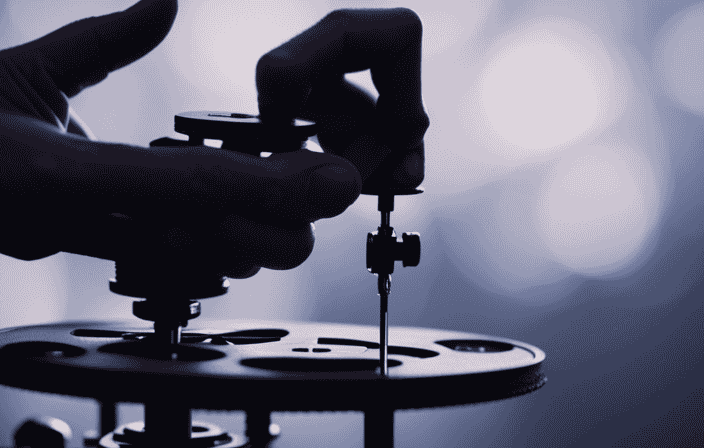When you view failure as a learning opportunity, you open the door to growth and resilience. Reframing setbacks as feedback helps you develop a growth mindset and bounce back stronger. Building self-compassion and support networks reinforce this mindset, turning mistakes into stepping stones. Each failure offers lessons that spark positive change, build confidence, and deepen understanding. Keep exploring how embracing failure can transform your journey and release your potential.
Key Takeaways
- Viewing failure as a learning opportunity fosters growth and encourages resilience.
- Reframing setbacks as feedback helps develop a growth mindset and persistence.
- Reflecting on lessons learned from failures builds confidence and guides future actions.
- Building support networks and practicing self-compassion accelerate recovery and adaptation.
- Embracing failure as part of the journey enhances perseverance and long-term success.

Failure often feels like a setback, but it’s actually a powerful learning opportunity. When you experience failure, it’s easy to fall into negative thought patterns that reinforce self-doubt or frustration. Instead, you can view failure as a chance to shift your mindset, embracing it as a necessary step toward growth. Mindset shifts are essential here; they help you see setbacks not as signs of inadequence but as valuable feedback. By reframing failure as a learning experience, you open yourself up to new perspectives and possibilities. This shift in thinking encourages resilience, allowing you to bounce back more quickly and with greater clarity. Resilience strategies become your tools for steering through tough times. You might start by practicing self-compassion, recognizing that everyone makes mistakes and that failure doesn’t define your worth. Developing a growth mindset—believing that skills and intelligence can be cultivated through effort—further enhances your ability to recover from setbacks. Instead of feeling defeated, you focus on what you can learn and how you can improve. Resilience isn’t just about bouncing back; it’s about bouncing forward. When you implement resilience strategies, you become more adaptable and better equipped to handle future challenges. For example, journaling your lessons learned from failure can help you internalize your growth and recognize patterns that need adjusting. Setting small, achievable goals after a setback keeps you motivated and demonstrates that progress is ongoing, even if it’s incremental. Building a support network also plays a critical role in strengthening your resilience. Sharing your struggles with trusted friends or mentors can provide fresh insights, encouragement, and perspective. These connections remind you that you’re not alone in your journey and that setbacks are a common part of progress. Additionally, understanding the importance of appliance maintenance plans can help prevent future setbacks by ensuring your tools and appliances remain reliable, whether in a personal or professional context. Over time, adopting these resilience strategies and mindset shifts transforms failure from an endpoint into a stepping stone. It’s a process that requires conscious effort but yields powerful results—greater confidence, increased perseverance, and a deeper understanding of your capabilities. The key is to remember that failure isn’t the opposite of success; it’s an essential component of it. By consciously choosing to learn from your mistakes and strengthening your resilience, you set yourself up for continuous growth. Every setback becomes an opportunity to refine your approach, deepen your understanding, and develop the grit necessary to achieve your goals. In this way, failure becomes less intimidating and more a necessary part of your journey toward success.
Frequently Asked Questions
How Can I Identify Hidden Lessons in My Failures?
To identify hidden lessons in your failures, start with reflection techniques like journaling or asking yourself what went wrong and why. Be honest, and look for patterns or recurring issues. Use emotional resilience to stay open-minded and avoid self-blame. This mindset helps you see setbacks as learning opportunities. By consistently analyzing your experiences, you’ll uncover valuable insights that foster growth and future success.
What Mindset Promotes Growth After Experiencing Setbacks?
When setbacks hit, you need a mindset shift to see failure as a stepping stone, not a stumbling block. Embrace resilience building by learning from mistakes and staying adaptable. Keep your eyes on growth, and remember that every cloud has a silver lining. Cultivating a growth-oriented outlook helps you bounce back stronger, turning setbacks into opportunities for improvement and success. Stay positive and keep pushing forward!
How Do Cultural Differences Influence Responses to Failure?
You find that cultural differences greatly influence how you perceive failure and build resilience. In some cultures, failure is seen as a learning opportunity, fostering cross-cultural resilience, while others view it as shameful, leading to avoidance. Your response depends on your cultural background, shaping whether you embrace setbacks as growth moments or fear them. Understanding these failure perceptions helps you adapt strategies that promote resilience across diverse cultural contexts.
What Are Common Mistakes to Avoid When Learning From Failure?
You might think avoiding mistakes when learning from failure is easy, but ironically, overlooking resilience strategies and emotional intelligence can backfire. Don’t ignore your emotions or dismiss setbacks; instead, use them to grow. Avoid blaming others or rushing to fix everything instantly. Instead, practice patience, reflect honestly, and develop emotional intelligence. These steps help you learn effectively and turn failures into powerful lessons for future success.
How Can Failure Accelerate Long-Term Success?
Failure accelerates your long-term success by strengthening resilience strategies and boosting learning agility. When you face setbacks, use them as opportunities to adapt quickly and develop new skills. You become more resilient, better equipped to handle future challenges. Embracing failure helps you refine your approach, stay flexible, and grow faster. This mindset ensures that each setback propels you closer to your goals, turning failures into valuable stepping stones for success.
Conclusion
Remember, failure isn’t your final act but a stepping stone—think of it as your own personal GPS rerouting you toward success. Just like the Wright brothers, who crashed countless times before their first flight, your setbacks are part of the journey. Embrace each stumble as a valuable lesson, and don’t be afraid to hit “refresh” and try again. After all, every great story has its plot twists—yours just happen to be lessons in disguise.









